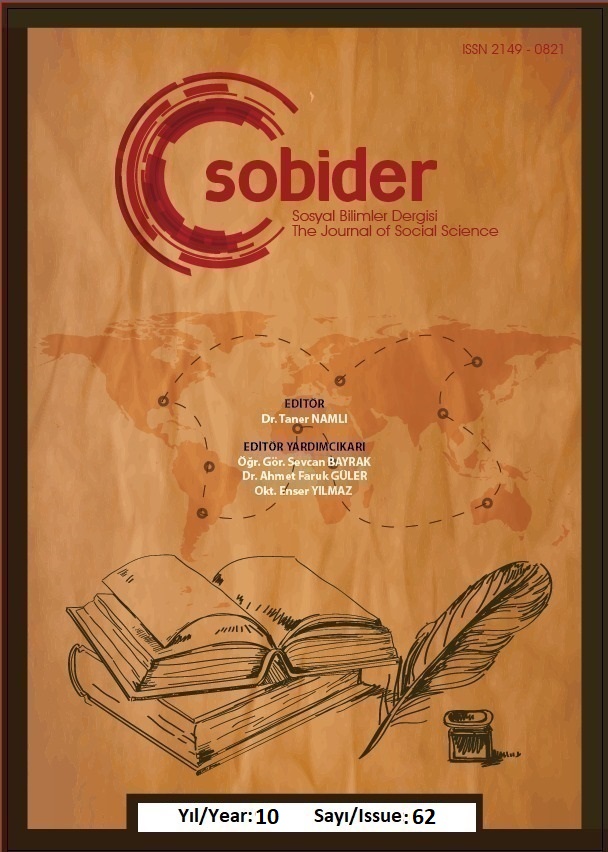Author :
Abstract
Doğaya yönelim romantiklerin düşüydü. Bir anlamda Modernite çağında doğa, romantikler için politik gizil anlamlar içermekteydi. Doğaya bakış; salt biçimsel bir bakışın da ötesinde, zamanın ruhuna karşı bir bakışa, zamana direnişi içeren bir estetik ifadeye dönüştürülmüştür romantikler tarafından. Bu makalede, Caspar David Friedrich’in “Sis Denizinin Üstünde Gezgin” adlı tablosundan hareket edilerek romantik bireyin ve doğanın muğlak imgesinin yarattığı gizil politik anlamların izi sürülecektir. Ve bu gizil politik anlamın boşlukla olan ilişkisi Caspar David Friedrich’in tablosu üzerinden okunmaya çalışılacaktır. Böylesi fantazyaları yaratabilen boşluğun; Modernitenin karşısında yapıtın açtığı karşı bir uzam olduğunu söyleyebilmekte mümkün. Arzuları doğuran belirsiz bir uzamın Caspar David Friedrich ile birlikte birçok romantiğin evi olduğu da söylenebilir. Ayrıca, boşluk kavramı üzerinden yapılan politik bir doğa yorumu okuyucuyu Romantizm ve sanatın özerkliği kavramları üzerine bir daha düşünmeye sürükleyebilir.
Keywords
Abstract
The orientation to nature was the dream of the romantics. In a sense, in the era of Modernity, nature contained political implicit meanings for the romantics. Overview of nature; Beyond a purely formal view, it was transformed into a view against the spirit of time, an aesthetic expression that includes resistance to time by the romantics. In this article, the latent political meanings created by the ambiguous image of the romantic individual and nature will be traced, based on Caspar David Friedrich's painting "Wanderer on the Sea of Fog". And the relationship of this latent political meaning with emptiness will be tried to be read through Caspar David Friedrich's painting. The emptiness that can create such fantasies; It is possible to say that there is a counterspace that the work opens against modernity. It can also be said that an indefinite space that gives birth to desires is the home of many romantics with Caspar David Friedrich. In addition, a political interpretation of nature through the concept of emptiness may lead the reader to reflect on the concepts of Romanticism and the autonomy of art.





